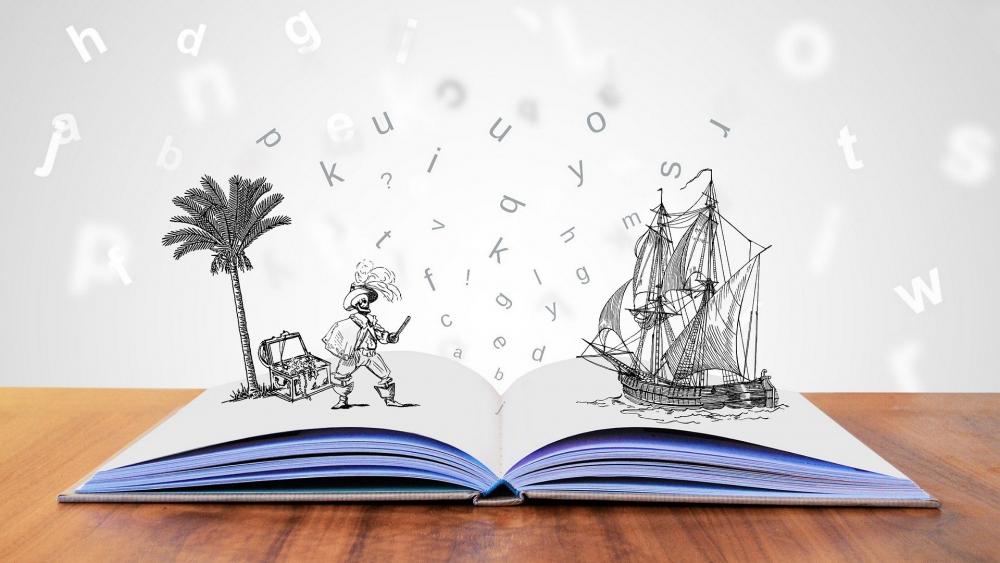
In the charming world of storytelling, there exists a dynamic duo that holds the energy to ensnare readers inside the pages of a narrative: tension and suspense. These factors not only draw readers in but also compel them to stay engaged, eagerly awaiting what comes next. Today, we'll explore 5 worthwhile techniques that could empower you to master the art of creating tension and suspense in your writing, ensuring that your target audience remains riveted until the final word.
Foreshadowing
Foreshadowing serves as the subtle art of planting seeds of anticipation throughout your narrative, hinting at future events and revelations. Much like breadcrumbs along a trail, these clues beckon readers forward, eager to discover the mysteries that lie ahead. Consider J.K. Rowling's "Harry Potter and the Sorcerer's Stone," where carefully placed foreshadowing hints at the true nature of characters and plot twists. To employ foreshadowing effectively, strategically scatter clues early in your story that build into significant events. Remember, subtlety is key—too blunt a style will lose the element of surprise.
Cliffhangers
Ah, the cliffhanger—a literary tool that leaves readers teetering at the precipice of anticipation, waiting for a logical turn of events. Think of it as a sudden plunge into uncertainty, where each chapter's conclusion leaves readers clamoring for more. Just like the gripping moments in popular TV series like "Game of Thrones" or the pulse-pounding twists in books like "The Hunger Games," cliffhangers propel readers forward, desperate to uncover what lies beyond. Crafted skillfully, they can be a potent weapon in your storytelling arsenal, but be sure to resolve them effectively to satisfy your audience's thirst for closure.
Character Conflict
At the heart of every gripping narrative lies conflict—the friction that ignites tension and drives the story forward. Whether it's the clash of personalities, the battle against external forces, or the struggle raging within a character's psyche, conflict is the driving force behind your story. Consider iconic rivalries like Sherlock Holmes versus Moriarty, where each encounter crackles with suspense and intrigue. To accentuate conflict in your writing, pit your characters against formidable adversaries or force them to confront their fears and desires. Strike a delicate balance, however, ensuring that conflict serves not only to heighten tension but also to deepen a character's development.
Pacing
Pacing, much like the rhythm of a heartbeat, dictates the ebb and flow of your narrative, guiding readers through peaks of excitement and valleys of anticipation. This is the ability to accurately determine when to increase or decrease the tempo of tension. Picture a rollercoaster ride, with twists and turns that leave readers breathless with anticipation. To master pacing, experiment with sentence structure, dialogue, and scene transitions, organizing the chronology of events in your story.
Atmosphere and Setting
The backdrop against which your story unfolds—the atmosphere and setting—hold the power to set the mood and tone, casting a spell of tension and unease over your narrative. From the ominous corridors of a haunted mansion to the bustling streets of a dystopian city, the right placement can evoke a visceral reaction, heightening suspense and anticipation. Consider Stephen King's "The Shining," where the isolated, snowbound Overlook Hotel becomes a character in its own right, its chilling presence intensifying the sense of isolation and dread. To craft a gripping atmosphere, employ descriptive language that paints vivid imagery, immersing readers in the world you've created. Pay heed to the details that evoke anxiety and keep readers on the edge of their seats, poised for the next twist in the tale.
In the world of storytelling, mastering the art of tension and suspense is an adventure of discovery—one that requires practice, patience, and a willingness to explore the depths of creativity. By harnessing the power of foreshadowing, cliffhangers, character conflict, pacing, and atmosphere, you can send your readers on an exhilarating odyssey, leaving them breathless with anticipation at every turn. So, embrace the challenge, unleash your imagination, and craft narratives that will keep your audience enthralled from the first page to the last.




